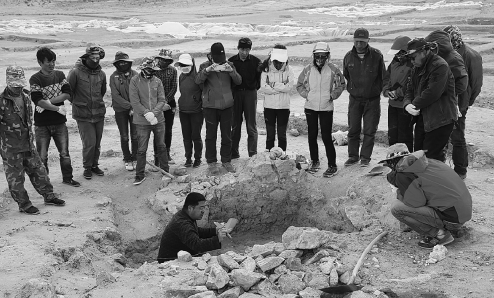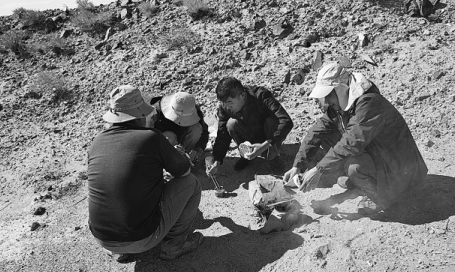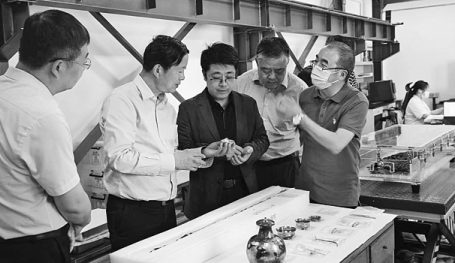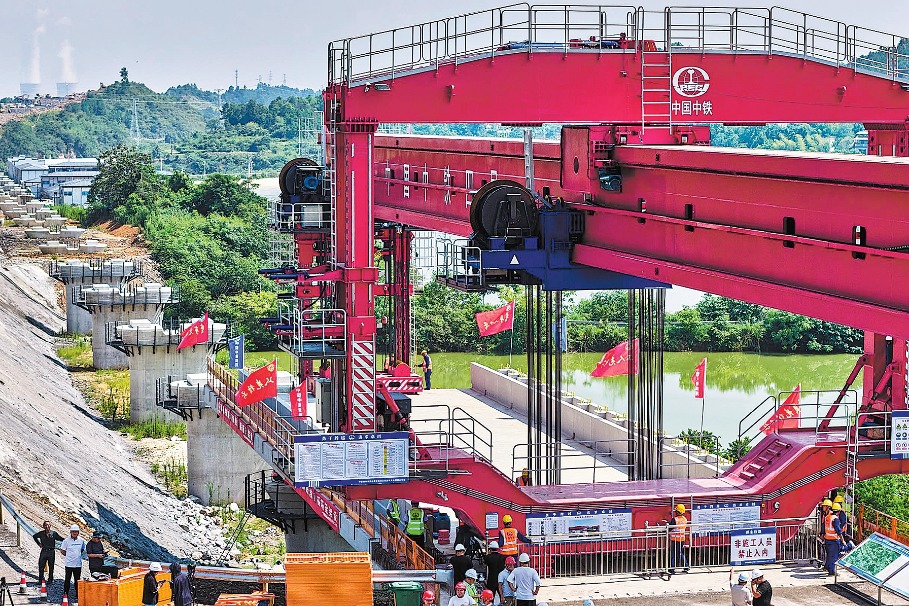An ancient metal urge
After discovering a special interest at a site in 2007, Chen Guoke has become a preeminent practitioner in the field of archaeology, Wang Ru reports.

Twenty-two years ago, a young man from Jingning county, Gansu province, was choosing his major, and the university at which he would study it, after gaining good grades in the college entrance exam. His parents, a coal miner and a farmer, were both illiterate and could not offer constructive suggestions to their son about his options.
Considering the climate and living expenses, the young man, Chen Guoke, decided to apply for Sichuan University. He applied for both journalism and archaeology majors, and was eventually enrolled into the latter.
"Journalism is about the new, while archaeology is about the old. They seemed to be two extremes for me. I was immature and wanted to play with my destiny, so I filled in my application form in this way as a joke," recalls Chen, who is now 42.
According to Chen, archaeology was not very popular at that time, and he just knew it was about history, a subject in which he had a vague interest. What he didn't know, however, was how to utilize it after learning this major.
The decision decided the path of his life, as he became a professional archaeological researcher, devoted to field excavations and making impressive discoveries, despite all the hardships he encountered along the way.
After graduation, in 2004, he returned to Gansu, and started to work at the Gansu Provincial Institute of Cultural Relics and Archaeology. According to Chen, in recent years, archaeological work there has mainly focused on the origin of Chinese civilization, the spread of agriculture and the exchanges between different ethnic groups.
Located at the juncture of the Qinghai-Tibet Plateau, Mongolian Plateau and Loess Plateau, Gansu has been an important crossroads for communication between the China's east and west and, as such, nurtured diversified cultures. The east and west flanks of the Liupan Mountain in Gansu are important areas in the birth and development of Chinese civilization, as proved by excavations at the Nanzuo site in Qingyang city. The Hexi Corridor, the main artery of the ancient Silk Road in Gansu, was an important channel for cultural exchange.
When Chen became engaged in a project to study the ancient metallurgical sites in the Hexi Corridor in 2007, he developed an interest in archaeometallurgy, which he found "could further answer archaeological questions in a laboratory". As a result, he applied to learn it as a workplace postgraduate degree, and between 2008 and 2015, pursued his master's and doctorate at the Institute of Cultural Heritage and History of Science and Technology at the University of Science and Technology in Beijing.
"It was a turning point in my life," he says.
"The time I took part in field excavations while analyzing metallurgical relics in the lab, it was a new beginning in my career."
Learning archaeometallurgy proved to be important for the work in Gansu. Some of the earliest metallurgical sites in China, like Xichengyi metallurgy site, were found in the Hexi Corridor, making it a core area to study early metallurgy in China, according to Chen. Archaeological work on metallurgical sites in the Hexi Corridor has been conducted for more than a decade, promoting the exploration of the appearance, development and spread of metallurgical techniques in Northwest China.
Since 2011, Chen has been engaged with two excavations concurrently, Xichengyi metallurgy site and Mazongshan jade mine site, meaning that he spent around eight to nine months in the field every year.
Mazongshan is a vast but sparsely populated area, which covers 32,000 square kilometers with less than 1,000 residents. As a result, Chen found it hard to hire local people to help the team excavate the site. Adding to the challenging work is the fact that the site is far away from the town where the team stays. To save time, they spent as many hours as possible at the dig site, eating instant noodles, cakes, cucumbers and tomatoes for their meals. In October, when strong winds and snow would become more frequent, sometimes the boiling water would get cold before the instant noodles would cook.
The archaeological work in Mazongshan spanned from 2011 to 2017. As leader of the team, Chen had to do the work of several people, which was exhausting. "On the broad Gobi Desert, which stretched to the horizon, the freezing wind often made people feel desperate. All I remember are the feelings of helplessness at that time, and the surprise at any new finding," recalls Chen.
Through hard work, and some luck, Chen and his team found important jade mines in the area. Their later research on the mines improved understanding of early jade mining, the origin of tremolite, and the transportation of jade from the west to the east of the country.
"Archaeology has trained me to be hardworking, improved my ability to endure hardships and solve various problems. These are the gifts the work has endowed me with," says Chen.
In recent years, some of Chen's most important work has been the protective excavation of a number of tombs belonging to the royal family of Tuyuhun khanate, a contemporary of the Tang Dynasty (618-907), especially that of Murong Zhi, a son of the last Tuyuhun monarch, who is also a grandson of Tang emperor Li Shimin.
Discoveries by Chen and his colleagues include the earliest known white wine and well-preserved stationery, especially the only Tang-era writing brush ever found in China.
Qi Dongfang, a professor at the School of Archaeology and Museology at Peking University, told Cover News, "We have never found such well-preserved stationery at an excavation site. In my memory there were some good inkstones found, but writing brushes, ink or paper are very hard to preserve."
"The structure of the tomb, alongside numerous funerary objects like warrior figures, a wooden bed and folding screens, have distinctive Han cultural style. Meanwhile, other features, like the site selection and animal sacrifice reflect a nomadic culture. The tomb is a mixture of diverse culture. It indicates some of the cultural exchanges that took place at that time," says Chen.
Excavation of the Tuyuhun tombs was listed as one of China's top 10 new archaeological finds of 2021.
Now, as head of Gansu Provincial Institute of Cultural Relics and Archaeology, Chen finds it stressful to balance academic research and management of the institute. He is trying to integrate his own development with the growth of the institute.
"After being engaged with archaeology for more than 20 years, it has become my mission to study it. I realize the sharing of our academic results lags behind. I hope we will improve that, so the general public can learn more about our progress and perhaps gain from it," says Chen.



Today's Top News
- China continues to suspend or removes export controls on some US entities
- Xi says China, Brazil can set example of unity, self-reliance in Global South
- China to extend tariff suspension on imported US products
- Joint Statement on China-US Economic and Trade Meeting in Stockholm
- More grads chart career paths in west of China
- Why China's AI initiative is critically important






























